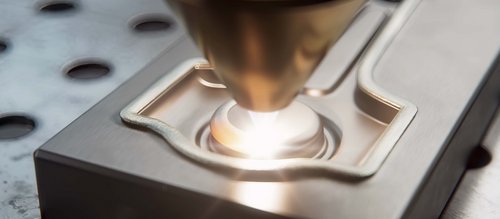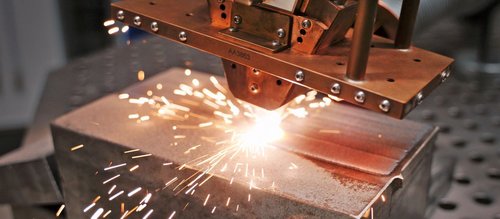
The Brake Disc for Less Fine Dust - New Euro 7 Pollution Rules
High-speed laser cladding process supports the cost-effective manufacture of a new brake disc generation able to meet significantly stricter limits for brake dust emissions in new Euro 7 pollution rules
In terms of new environmental protection efforts, the reduction of CO2 emissions along with the reduction of fine dust is an important goal. Both the emissions from combustion engines themselves as well as abrasion from tyres and brakes (discs and pads) represent a relevant proportion of fine dust pollution. Friction between the brake disc and brake pads generates heat and fine dust, which is deposited on the vehicle rim and on the road. As a result of the constant turbulence, a large proportion of this is ultimately in the air.
New high-speed laser cladding technologies make it possible to manufacture low-wear brake discs and lead to a significant reduction in fine dust emissions. Today's grey cast iron brake discs already have good service lives, but are subject to wear and tear and must be replaced several times during the service life of a vehicle.
Cladding with laser technology enables the production of low-wear brake discs on a grey cast iron basis. The comparatively inexpensive base material and its manufacturing processes can still be retained, but decisive parameters are optimized by a powder-based additional layer which is welded on by means of a high-power diode laser. In addition to a wear-protecting layer made of tungsten carbide, for example, pure corrosion-protecting layers can also be applied. Here the application is decisive.
For a particularly economical coating, high-speed processes are usually used. A metallic fusion bond is created between the applied powder and the base material, but the thermal load on the base material is low. This enables particularly fast process speeds to be achieved, which are also suitable for industrial mass production and, in contrast to other thermal processes, practically do not cause any distortion of the brake discs.
In summary, the advantages of laser-coated brake discs are corrosion- and abrasion-resistant surfaces, reduced brake dust load and extended service life. Laser-coated brake discs are not only suitable for current combustion engines, they will also be used in future electric vehicles, where brake discs will have to meet the need for low particulate emissions.
Read more on this topic in our whitepaper or contact us directly with your enquiry.




